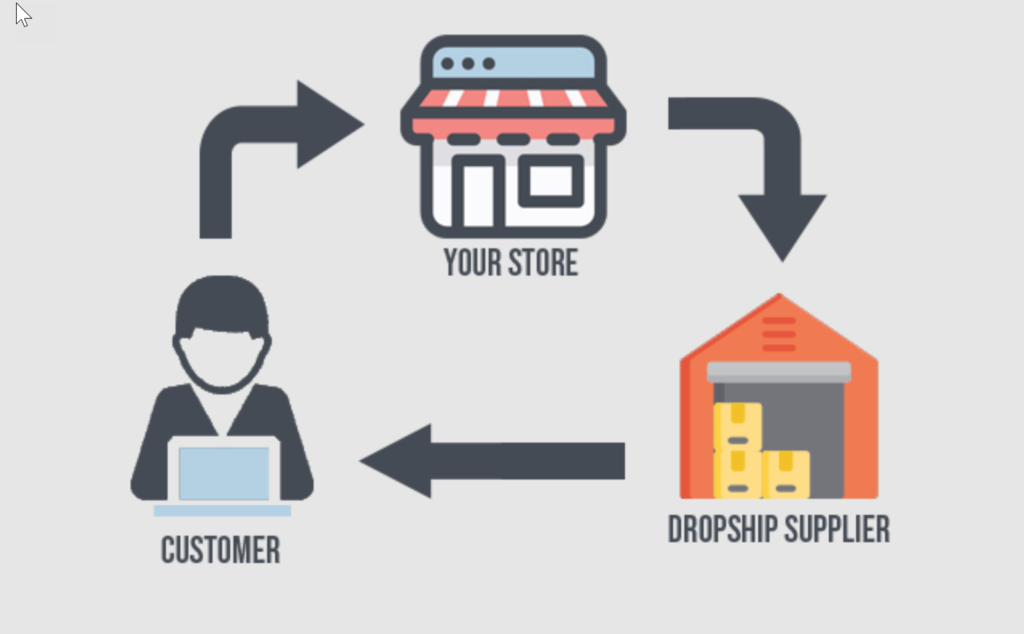Last Updated on October 30, 2024 by Owen McGab Enaohwo
Image Credit: Shift4Shop
Dropshipping is a type of online retail business where the seller doesn’t actually buy stock beforehand to sell but instead makes the sale first and then places the order to the supplier, who will ship directly to the end customer. The dropshipper takes care of marketing, the actual sale, payment processing, and customer management while avoiding stock space and cost and logistics handling.
While dropshipping is more straightforward than a regular retail business, it still requires some careful process management planning. To begin, all you have to do is partner with eligible dropshipping vendors, but first, let’s review the pros and cons.
Pros of Dropshipping
- Low investment opportunity
- No storage space
- Fastest cash-flow possible
- No need to manufacture
- You can use the marketing material from the supplier
- Sell directly on platforms and social media
- Low-cost advertising through Google Ads and Facebook Ads
- Promote as many different products as you want from established brands
Cons
- You still have to manage angry customers even though you did not produce the faulty product or mess up the delivery.
- Provide the correct customer delivery information
- Have a legal responsibility with the customer if anything goes wrong
- Handle product returns and reimbursements
So, there must be a standard process management plan to have a business running smoothly. Here are the basics of what it should look like.
Setting-Up Your Dropshipping Business
Understand that you are an intermediary between the supplier and the customer. The shipment goes under your name even though the supplier is the one that ships it out.
- Register your brand and create a micro-website. You need a business name to register with a dropshipping vendor and open different platforms accounts like social media, Amazon, eBay, payment processors like PayPal, etc. The micro-site or website is useful to provide additional information about your business or service, contact info, and policies and procedure page, which is required by law. Plus, you can use the site to host links to your product platform pages or sell them directly using a Woocommerce template or Shopify. When the suppliers ship to the customer, they will stamp your brand onto the packaging with your contact information, making you responsible for everything that happens in the process. You will have to monitor every stage of the delivery process using the tracking numbers provided by the supplier. Make sure to have the contact numbers of the shipping company and clearly understand their standard transit times and procedures so you can quickly solve issues and inform the buyer. In the meantime, make sure to check out this list of the best dropshipping products that will boost your sales process.
- Create a customer relationship manual. At least write down the basics of treating different scenarios so emotions and panic do not take over. What to do when the client is satisfied or angry? When a client is satisfied, use that to your benefit by asking for online reviews, testimonials, and newsletter subscriptions of recurring customers. When a client is angry with the product, establish what went wrong. Was it the product or the delivery? Ensure you keep the funds for a fast and smooth reimbursement and apologize to the customer. Be quick with a “we are sorry” mini-gift or a special discount for their subsequent purchase.
- An online payment processor, and various bank transfer options. Most dropshipping businesses are 100% online, so it makes sense most of your transactions will require some type of online payment processor like Paypal. 2Checkout is one of the most commonly used options, which will integrate several of the most used payment platforms like Paypal and credit cards. Nowadays, even a crypto option is a good idea. Online banks like online banking with SoFi also make it easier and more convenient to transfer funds as you can manage your account from your computer or mobile device. For locals, offer a local bank account option as well.
- Accounting and Taxes. Do not forget about these two business subjects. If you set up a legal business, make sure to consult with an accountant what is the proper procedure for invoicing, VAT, or Tax charges to clients and how to report it, and finally, how much you should be set aside to pay taxes next year. There are probably ways to cut taxes, like safekeeping invoices for business costs.
- Setting the right price. The profit margin will be key to your financial success. The goal will always be to obtain the lowest wholesale price while setting a decent price that offers a good profit margin after shipping and other costs. Always consider a hidden cost percentage into the profit margin in case something unexpected happens. Vendors always offer discounts and promotions during season changes, so be ready with enough cash to take advantage of the offers. Buying at very low prices gives you room to be more competitive and offers discounts and promotions of your own.
- Marketing. Create a budget for marketing and advertising. Test various methods, like Google ads targeted to specific locations or keywords, Instagram ads, pay for product testimonials to your best clients, or even offer them free products in exchange for a very complete review. You can even begin your own Youtube review channel or pay for reviews in advanced accounts from other users.
About the Author
Sara Ferrero is a freelance writer and SEO expert for various niches. She’s been working with affiliate marketers, online tech companies, and gaming sites for more than five years. Her personal company brand goes by the name Rank Easy and can be reached at sara.rankeasy@gmail.com.
